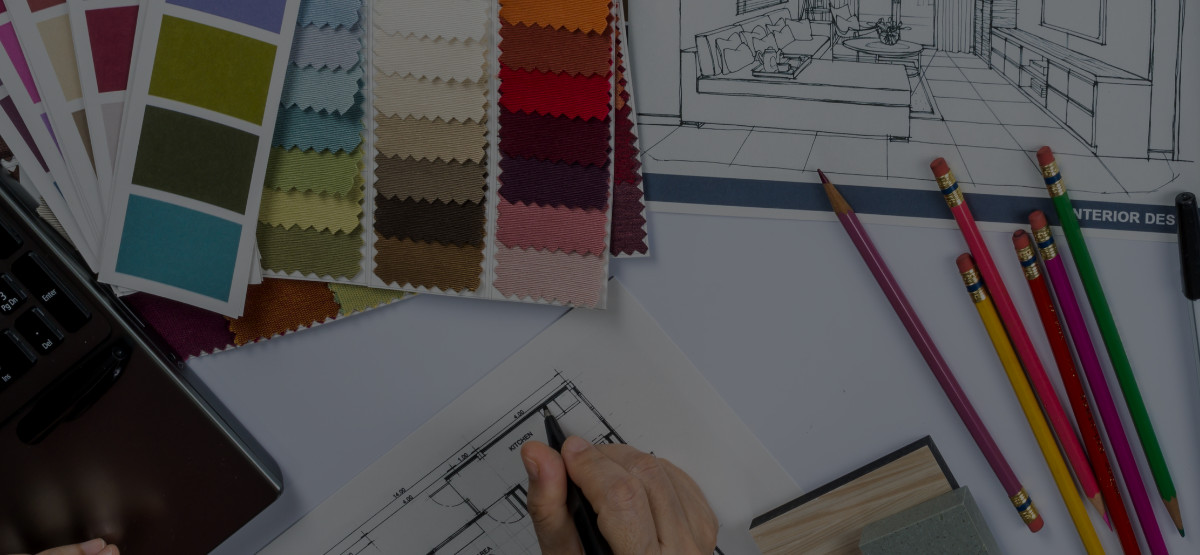Tammy Hart, I.D.D.P, CAPS is a graduate and tutor of Q.C. Design School and is a Certified Aging in Place Specialist from the National Association of Home Builders. She is the Senior Designer for the Designer Chick Co. (www.dznrchik.com) and is the Past Director on the National Board for DDA (formerly CDECA). She is a professional speaker, speaking at venues like IIDEXCanada and Heart of Networking. She’s been featured as a guest spot on Daytime Durham, Rogers TV and works to empower young women to become successful future leaders and supports ocean clean-up efforts.
One commonality exists between all individuals working in the design field. Whether you are a designer, decorator, organizer, stylist, color consultant or feng shui practitioner, as a “Creative Expert” you are ultimately in a sales role. You are selling your design concepts. You are selling your services. You are selling you. Through countless hours of working, partnering, and networking beside some of the most creative individuals I’ve ever had the opportunity to meet, there is another commonality that exists between “Creatives” – we don’t ever know what to charge for our service.
Sometimes undervaluing our EXPERTISE as what we do comes second nature to us – so how do you put a price on your “Creative Expertise”? The first step to selling your design concepts, your design services, and ultimately you, is to know how to strategically set your pricing structure.
I understand the struggle. I lived the struggle even though QC Design School’s Interior Decorating program prepared me for starting my business and drove me to start thinking about pricing structures through their units. However, when I graduated and entered the field, I was confused. And the more research I did about how to structure my pricing, the more confused I became. There’s no one commonly accepted way to charge for your service and there’s not a common price to charge for your service. What I did learn was that my research was important and I had to rely on that research, my target market and the services I offer to help guide how and how much I would charge for my creative expertise.
Some commonly used methods of charging are:
- Set Flat Rate Packages
- Hourly Consultation Fee
- Percentage of Project Budget
- Custom Pricing

Set Flat Rate Packages
Clients like Set Flat Rate Packages as they know exactly what they will pay provided the project stays within the scope of the package outline. You, as the consultant, need to carefully design the package and have a very good understanding of how many hours you anticipate dedicating to said package and the service(s) you are willing to offer for that flat fee.
It’s recommended that you asterisks the package and state that if there is a service that falls outside of the package or if the project extends beyond the hours included, you have an additional fee for that. Great services to use this structure would be for color consultations or rendering services. You know approximately how many hours a color consult will take between the home visit, palette selection and presentation, so create an attractive package price for this. A package price for rendering a floorplan will take into account the hours a rendering will take, time on site (if needed), the number of revisions allotted, printing costs and presentation.
Hourly Consultation Fee
On the other hand, the Hourly Consultation Fee, can benefit both parties. The client pays for no more and no less of the services provided by the consultant. The consultant charges the client exactly what they worked. Hourly consultation fee structuring is great. I find I use this structure for my initial consultations, for consultations with DIYers who are looking for guidance and reassurance, and for shopping with/for my clients. I carefully log my time and provide the client with a very close estimate of the number of hours I foresee the service taking.
Percentage of Project Budget
On larger projects, a Percentage of Project Budget may be an ideal method of charging. For instance, I recently quoted a large exterior redesign project. The project involved project management, renderings with two revisions, initial consultation, shopping with the client for exterior lighting, vendor/trade management, and color consultation. Total labor hours on my team’s end would be about 20 hours. The project budget is about $84,000. I allotted 5% for my design/project management service in that budget.

Custom Pricing
Sometimes, there are projects that don’t fit into the above three structures or perhaps you feel, as a value-add to your clients, Custom Pricing would be best as each project is unique in its own way. A great example of an opportunity to use custom pricing would be when, on initial consultation through your discovery, you learn the client would like you to 1) Color Consult 2) Space Plan 3) Shop with them for Décor Accessories.
Instead of charging for all three separate services, if two of those are packages and the other is hourly, custom price it – or in other words, “Create Special Pricing”. Present this to your client as “I wanted to create a custom price specifically tailored to the services you’re looking to receive and wanted to provide you with pricing that made the most sense financially.” Your clients will appreciate this as you’re not taking advantage of them, but thinking about their best interests.
How Do I Charge?
So the big question next, which I know you’re all wondering about is, “But Tammy, how much do I charge?” Great question! And one I can’t answer for you. But I’ll guide you. My best advice is to research what other “Creative Experts” in your area are already charging because a market standard currently exists. By charging too much, you will drive clients to shop elsewhere and by charging too little you will undervalue yourself and do an injustice to the market that already exists.
I was on Facebook a few weeks ago on a marketplace site and I saw a consultant advertising color consultations for $40. I died. I considered this a teachable moment, as did some others, to help her understand that most consultants/stylists/designers/decorators charge upwards of easily $400 for this service. She’s undervaluing her expertise and because you need to build partnerships, undercutting “the competition” is not advisable. Not even when you’re building your portfolio.

Consider it this way, I allot three hours for a color consultation from beginning to end. By charging $40 for a color consult, I’d be grossing $13.33/hour. The hourly rate in Toronto for a designer/stylist/decorator ranges between $70 to $150/hour. I’ll let you do the math to figure out the difference. But by charging so little, she’s undervalued her expertise. To increase her value, later on, will be an upward struggle as she has set the standard for her “worth”.
Ultimately, you need to set your fee structure by researching your existing market space against your target market and services. You may feel comfortable charging by the hour, setting a flat rate, charging by percentage or like me, using a combination of all of the above. Whatever you deem appropriate, remember, you are selling your design concepts, you are selling your services, you are selling you, and so you need to be comfortable with your fee structure. Always remember, people buy from who they know, like, and trust, so always exude passion, confidence, and approachability.


